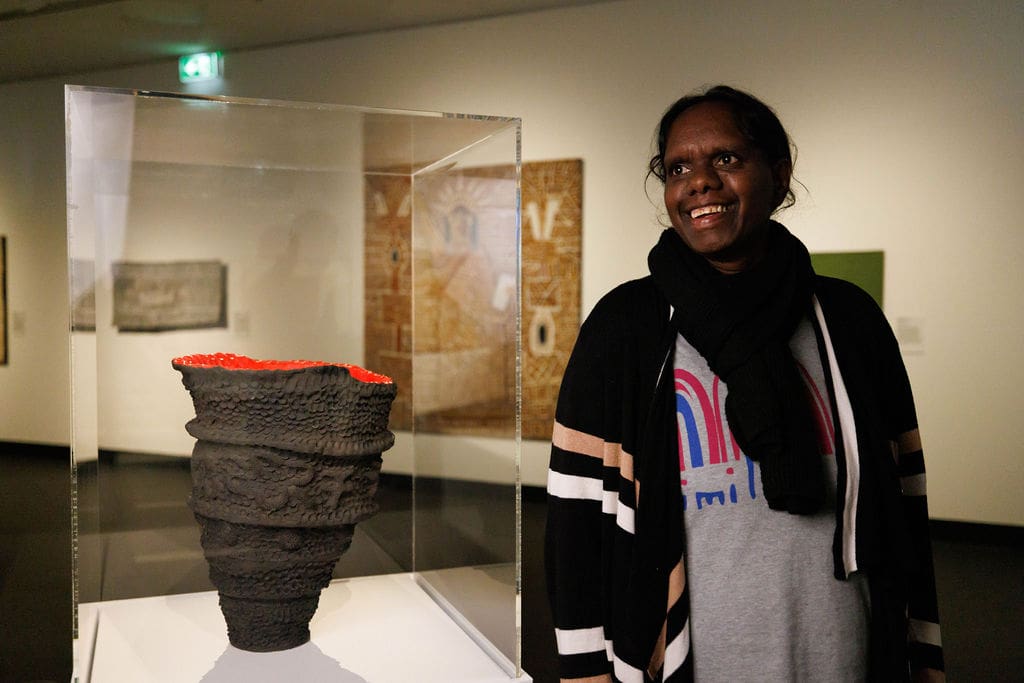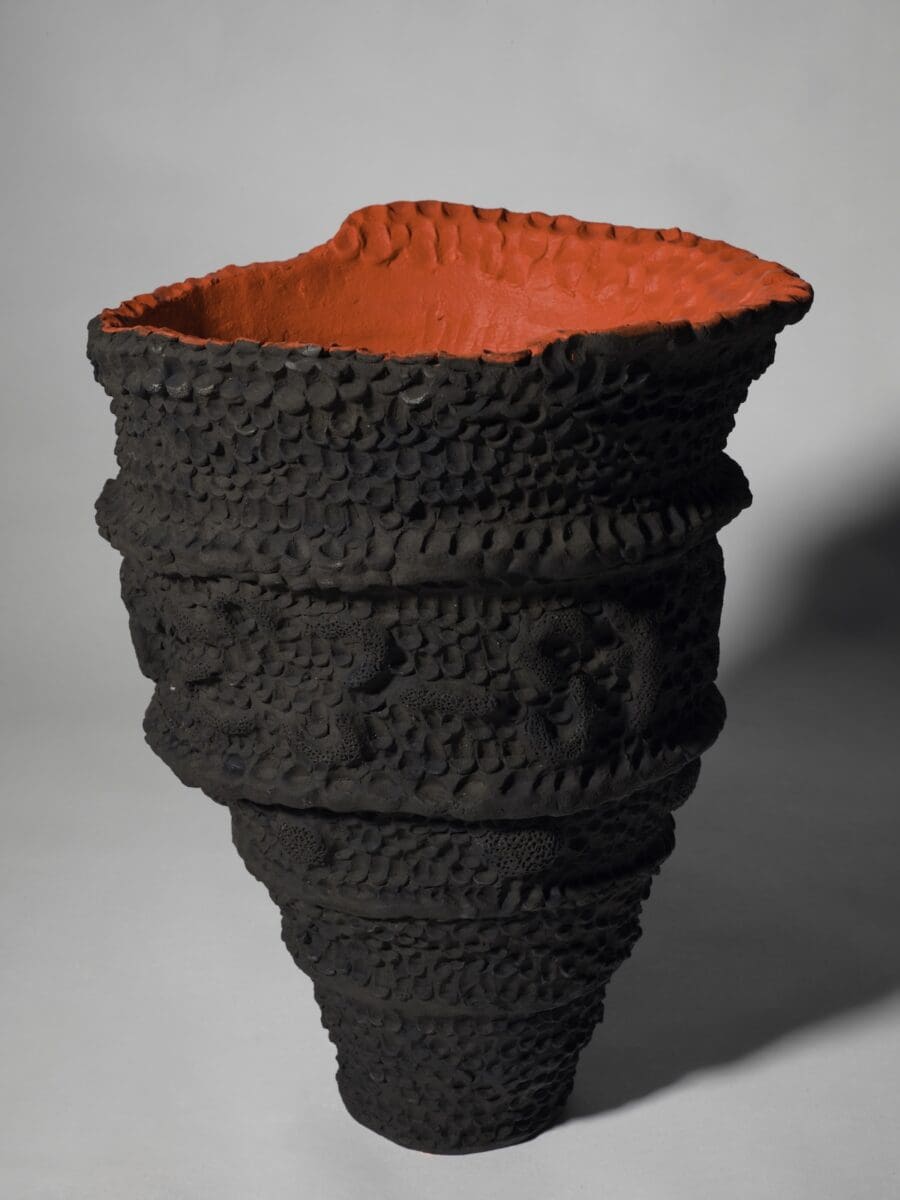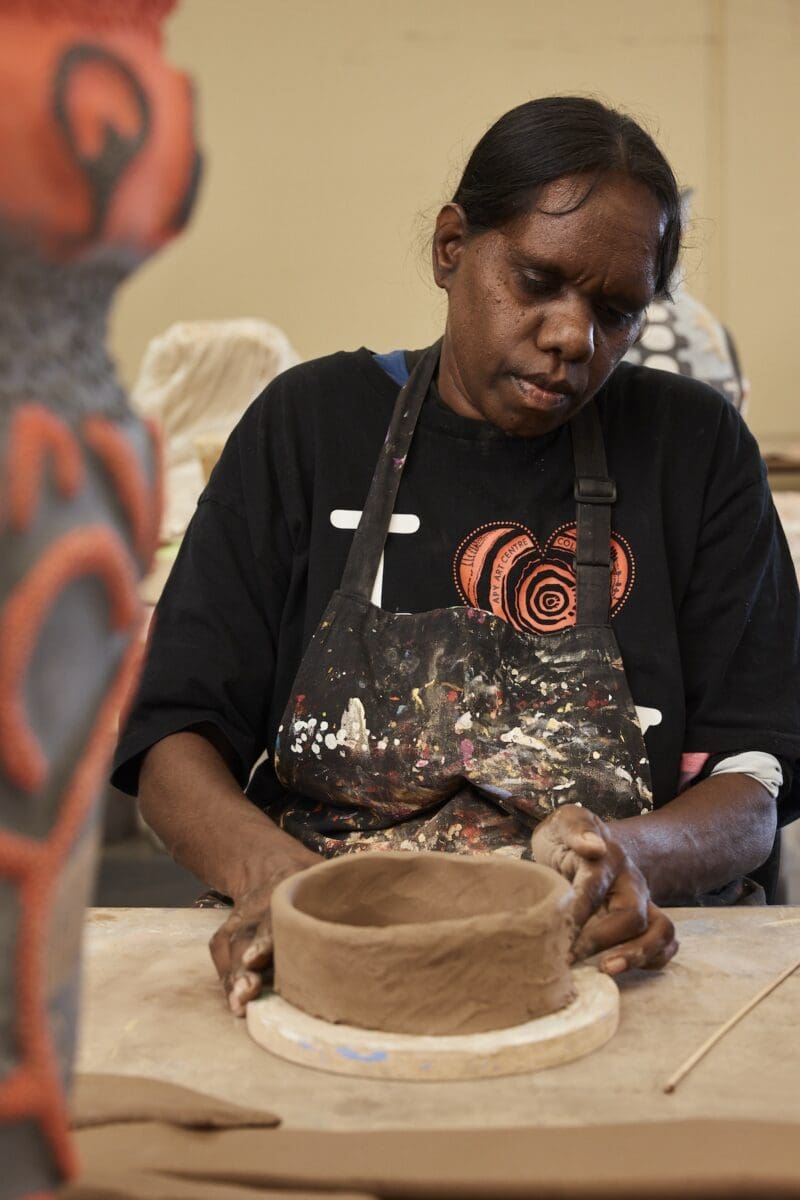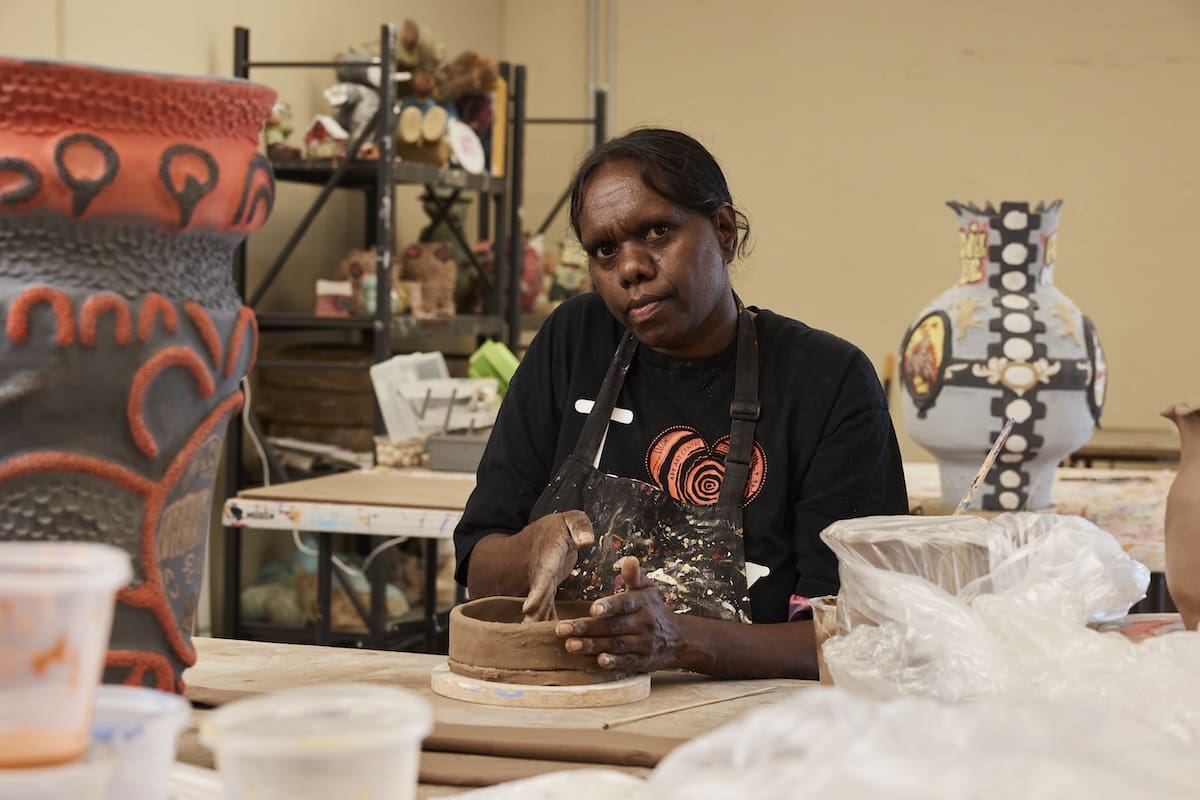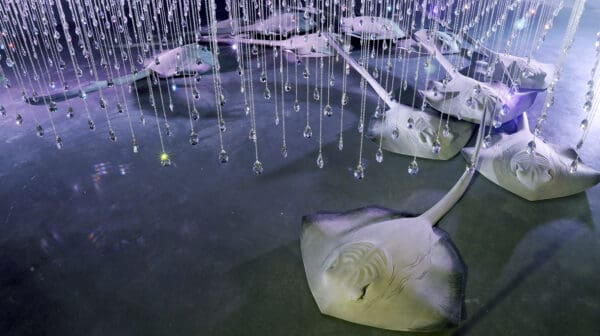For Josina Pumani, winning the Telstra Emerging Artist Award at the 2024 NATSIAAs represents a bittersweet victory. Her voice has shone a light on the dark histories affecting her community and this truth-telling was the inspiration behind her first ceramic work. In her winning submission’s artist statement, she said “Maralinga hurt our lands and people and our story needs to be told … we think about it all the time. Why did this happen to us?”
The NATSIAAs, the country’s longest-running and most respected Indigenous art award, provided a platform for Pumani to expose the hard truths about the nuclear testing executed by the British Government between 1957 and 1963 at Maralinga in South Australia. Governmental policies overlooked the wider Aṉangu community who were exposed to the 22 kilos of nuclear fallout through winds reaching far beyond the already miniscule exclusion zone, detected as far away as Townsville. This was a truly horrific outcome with fallout contaminating lands lasting well into deep time. The devastating effects continue seventy years later—a 2006 study into nuclear testing in Australia found that Aṉangu people experience a cancer mortality rate that is 18 percent higher than the country’s general population. Pumani’s stark response to the inactions undertaken by this buried history serve as a bold reminder of the power Aboriginal art holds, especially when provided with a national platform. Pumani’s staunch ceramic debut may not have come as a surprise to many when you understand the long line of respected leaders within her family and her earlier career work.
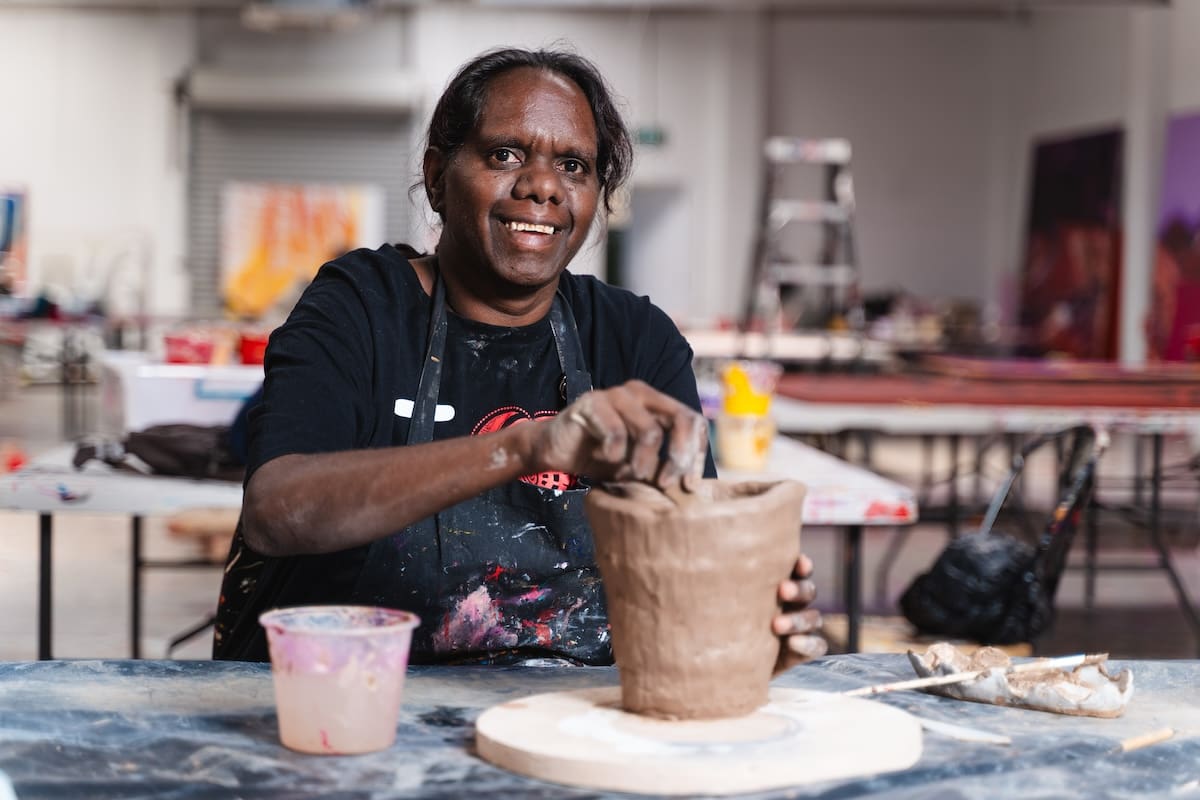
Born in 1984, of the Pitjantjatjara language, she is the daughter and granddaughter of the founders of Mimili Maku Art Centre, Militjari Pumani and Ngupulya Pumani respectively, niece of renowned APY leader, Yami Lester, and daughter of senior Yankunytjatjara leader Kunmanara (Shannon) Kanji. Her vast familial legacy and tight family traditions are a strong influence in her life, allowing her to draw upon this within her creative practice. Following the family footsteps, she started as an arts worker at Mimili Maku Arts in 2009 supporting senior artists and it was here—learning from Elders and building skills in canvas preparation—where she began her early painting career. Her time at the Mimili opened opportunities to study under her mother and grandmother. She painted stories carried by generations of women within her family focusing on Maku/Witchetty Grub Tjukurpa—a revered songline for the Antara area.
After six years of painting and supporting the team at Mimili Maku, Pumani moved to Adelaide in 2015 for educational opportunities, but after her mother’s passing in 2019, it became time to return and continue her support for community. Back at Mimili, she built upon the strong cultural leadership passed down from her mother and grandmother and began to reconnect with her art practice. Pumani now shares her time between the Mimili community and at the APY Collective Art Centre in Adelaide. This relocation allowed her to learn ceramics for the first time after her earlier career in painting, sparking the opportunity to tell the Maralinga story.
Sandra, her sister and fellow artist, who joined me in my interview, recalled Pumani talking of her first ideas when contemplating the design stating, “I’m gonna go this way because I grew up listening to those stories.”

As I spoke to Pumani, I asked why Maralinga was the first story that she needed to tell in her artwork and her answer resonated deeply within me. She said “that story is in us… when I was a little girl, I heard the story from my dad and my mum. Listening to them talk about that story and how it affected our people, our families and our uncle who went blind.” Her winning piece depicts a blackened conical vase-like pot, shaped as one of the plumes enveloping the skies of Aṉangu Country, ultimately blinding her Uncle Yami. Inside the vase, bold red tones highlight the intense heat emanating from the colossal smoke cloud. For the NATSIAA judges, this work isn’t just a representation of dark histories. It’s also a warning about the possible outcomes of nuclear energy use in this country’s not-too-distant future.
I felt so clearly how her coil pot encapsulates an innate desire to impart emotional reaction through its sheer size and colour. I think what makes this work so captivating is its own drastic presence, drawing on curiosity only to reveal its darker secrets.
Their conclusion has enabled my own reflections, not just on Pumani’s poignant piece, but on how art can hold so much power and opportunity. How do you begin to unpack an artwork such as Maralinga? For Pumani, the story of Maralinga continues on as her truth to share, a history that must be remembered, a past that cannot be escaped, and a future that must change for the better.
2024 Telstra National Aboriginal and Torres Strait Islander Art Awards
Museum and Art Gallery of the Northern Territory (MAGNT)
On now—27 January


